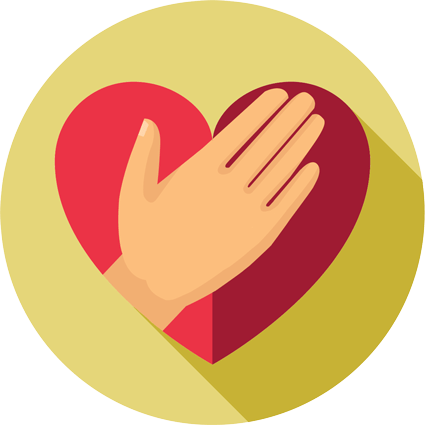
|
One of the main purposes of mindfulness is to see things as they are, rather than as we imagine them to be or wish them to be. The invitation to be present with whatever arises, in any area of our lives. This inquiry can be uncomfortable at times, when we examine the painful areas, which raise judgment or aversion. This is understandable–we seek pleasant experiences and avoid unpleasant ones. Why would you want to be with something unpleasant or painful? Perhaps because in your life, as in everyone’s life, there are painful things just won’t go away. Or, you may find that if one unpleasant situation does happen to change, it’s replaced by the next distressing thing—yet another thing to fight, resist, and get rid of. As many of us have found out, blocking the pain, pretending that it does not exist, or intellectualizing it, does not work. Pain is inevitable. The question is whether the way we engage with the pain helps or hurts us, frees or imprisons us. One of the Buddha’s well-known parables is about a person being struck by two arrows. The first arrow is the pain, and it is inevitable; the second arrow is suffering, and that we can work with. What brings about the second arrow is the resistance to the pain–flexing around it, pretending it isn’t there, etc. A simple equation would be: Suffering = pain x resistance A dear friend of mine posted on FB during this pandemic: “It’s been a great weekend – restful and lovely – but tonight i feel inexplicably sad. still having trouble concentrating to write or read – and just … knowing that we probably don’t have the power, or the will, to transform our world in the way it needs to be transformed, post this crazy virus crap. well shit, what if i am feeling sad because I finally slowed down long enough, unplugged long enough, breathed deeply enough … to begin to *get it* ? to actually have the enormity of this start to sink in? is the solution to spend tomorrow busier? or: is the ‘solution’ to live even more deeply into the feeling?” I think my friend nailed it with the “solution” she poses. Thankfully, resistance is not a constant. If it were we would be doomed. But resistance is something we can work with and learn to let go of, or to at least soften around, and our mindfulness and compassion practices can help. The first step is to recognize what is going on. What is the pain, and where is it? Is it compounded by a resistance component? What does it feel like in your body? Where? What are the thoughts that are common with resistance? Can you see how resistance flavors an experience in a very recognizable way, but that it is separate from what is happening? You can start exercising your muscles of containing pain by building a little bit of resistance around something mildly unpleasant, like some itch or discomfort you feel while meditating. You will notice how your mind will kick up a storm against why this is so ridiculous not to scratch. But you can just watch your mind railing and let the nose itch. Then you will discover what might be revolutionary to you: the itch will eventually go away by itself. Because these fast times have eroded our ability to withstand pain and postpone gratification, many of us don’t know that we actually are able to just tolerate a craving—and it will go away by itself. You may notice that resistance will diminish, and maybe even dissolve, once you just bring gentle awareness to it. A great example is Cori Doerffeld’s children’s book The Rabbit Listened. The protagonist, a boy named Taylor, built a beautiful castle from his building blocks that then got destroyed. Many animals come to visit him in his anguish, encouraging him to laugh it off, to cry, to move on and build a new one, to exact revenge on the wrongdoers… and only the rabbit sits with Taylor, listening to him as he cycles through pretending, crying, being angry, laughing, planning revenge, and eventually trying to rebuild. My friend Yifat Matzner Heruti’s work on parenting is based on this principle: rather than “fixing” our children’s discontent, we sit with it, kindly and gently support and inquire what arises, and see the sensations, feelings and thoughts change and transform. If you think of yourself as your own seemingly inconsolable child, you’ll see that this medicine can be applied to yourself, rather than just to the people around you. In addition to these benefits, flexing your psychological muscles to be able to contain the fact that you are experiencing an unpleasant thing also gives you the pause you need to choose the way you want to react. Your patience with yourself allows you, once you feel that you have extended yourself the compassion you needed, to choose a different way to react. How do we do it? A key part of sitting with unpleasant experiences is to be kind to us as we do it—to learn to extend ourselves self-compassion. This is a skill that you learn. Sometimes your own personal makeup and/or your cultural upbringing makes it feel selfish or indulgent to feel and express compassion for yourself. But doing so is not the equivalent of numbing your mind to suffering (which is a form of resistance.) Taking the time to do this is far from selfish: it gives us greater capacity to extend the compassion toward others. Chiding yourself over feeling what you’re feeling is resistance. Another source of confusion is that many people lump self-compassion with something very different–telling yourself stories about how miserable and aggrieved you are. You’re drowning your immediate, somatic experience in your intellectualizing – this, too is a form of resistance, in which we engage either because we want affirmation (social media) or because we think we will toughen ourselves up if we have high expectations of ourselves. So what do we do? We accept what is going on for what it is. There are many traditional and modern practices of self compassion. A good place to start is psychologist Kristin Neff’s work. Her exercise “self-compassion break” walks you through three aspects of self-compassion:
These are hard times and the suffering around us is overwhelming. Remember to include yourself in the circle of compassion and kindness. Your own health and sanity can be a beacon for the people around you, as you continue to offer compassion in ever-expanding circles to your loved ones, friends, acquaintances, strangers–even difficult people–to eventually encompass all living beings. You, too, are a living being, deserving of love and belonging. |




No comment yet, add your voice below!